- Author Matthew Elmers [email protected].
- Public 2023-12-16 21:49.
- Last modified 2025-01-24 09:17.
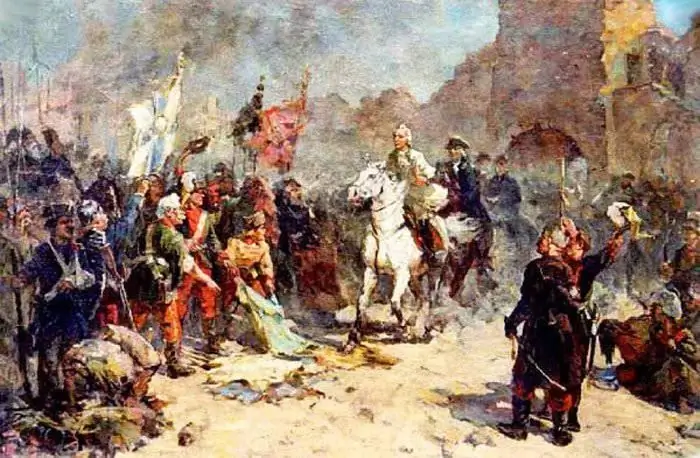
The Day of Military Glory of Russia, celebrated today, was established in honor of the Day of the capture of the Turkish fortress of Izmail by Russian troops under the command of A. V. Suvorov in 1790. The holiday was established by Federal Law No. 32-FZ of March 13, 1995 "On the days of military glory (victory days) in Russia."
The capture of Izmail, the citadel of Turkish rule on the Danube, was of particular importance during the Russian-Turkish war of 1787-1791. The fortress was built under the guidance of German and French engineers in accordance with the latest fortification requirements. From the south it was defended by the Danube, which here is half a kilometer wide. Around the fortress walls, a ditch 12 meters wide and 6 to 10 meters deep was dug, in some places of the ditch there was water up to 2 meters deep. Inside the city there were many stone buildings suitable for defense. The garrison of the fortress consisted of 35 thousand people and 265 guns.
Quick reference
The assault on Izmail in 1790 was undertaken during the Russian-Turkish war of 1787-1792. by order of the commander-in-chief of the Southern Army, Field Marshal General GA Potemkin. Neither N. V. Repnin (1789), nor I. V. Gudovich and P. S. Potemkin (1790) were able to solve this problem, after which G. A. Potemkin entrusted the operation to A. V. Suvorov. Arriving on December 2 near Izmail, Suvorov spent six days preparing for the assault, including training the troops to storm the models of the high fortress walls of Izmail. The commandant of Ishmael was asked to surrender, but in response he ordered to report that "the sky will sooner fall to the ground than Ishmael will be taken."
For two days, Suvorov conducted artillery preparation, and on December 11, at 5:30 in the morning, the assault on the fortress began. By 8 o'clock in the morning all the fortifications were occupied, but resistance on the streets of the city lasted until 4 pm Turkish losses amounted to 26 thousand people. killed and 9 thousand prisoners. The losses of the Russian army amounted to 4 thousand people. killed and 6 thousand wounded. All the guns, 400 banners, huge supplies of provisions and jewelry for 10 million piastres were captured. MI Kutuzov was appointed commandant of the fortress.
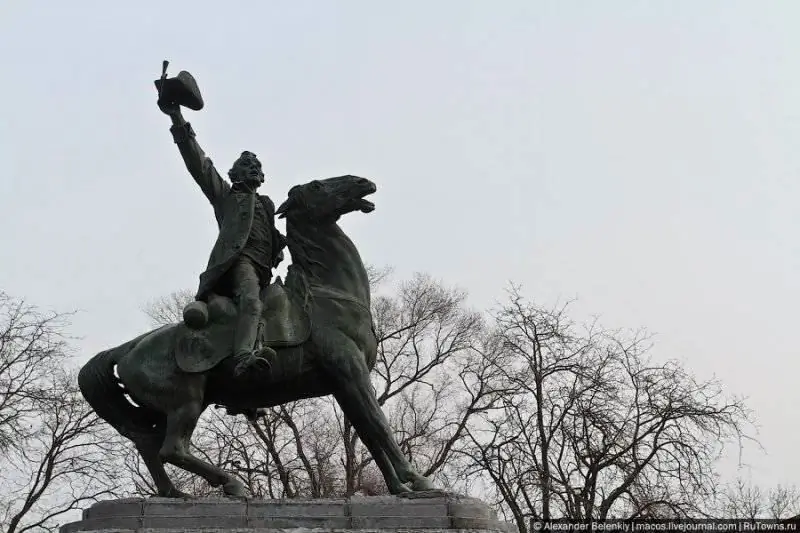
Today Izmail with a population of 92 thousand people is a city of regional subordination in the Odessa region
Background
Not wishing to come to terms with the results of the Russian-Turkish war of 1768-1774, Turkey in July 1787 demanded an ultimatum from Russia to return the Crimea, renounce Georgia's patronage and consent to inspect the Russian merchant ships passing through the straits. Not receiving a satisfactory answer, the Turkish government declared war on Russia on August 12, 1787. In turn, Russia decided to take advantage of the situation in order to expand its possessions in the Northern Black Sea region by completely ousting the Turkish invaders from there.
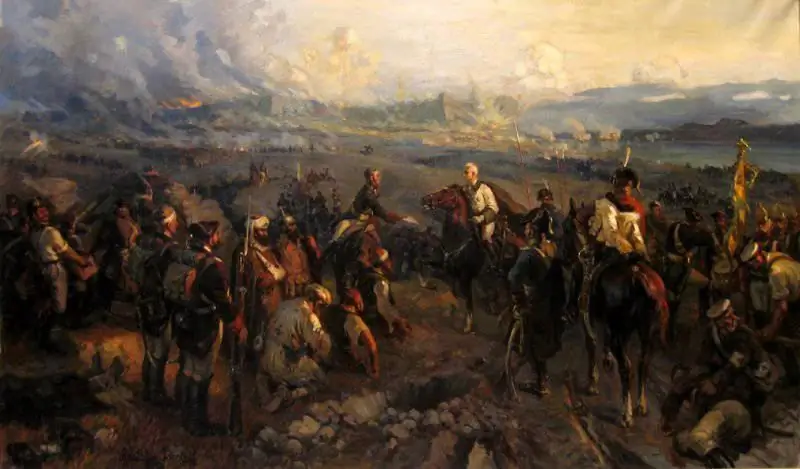
In October 1787, Russian troops under the command of A. V. Suvorov was almost completely destroyed by the 6-thousandth landing of the Turks, who intended to seize the mouth of the Dnieper, on the kinburg spit. Despite the brilliant victories of the Russian army at Ochakov (1788), at Focsani (1789) and on the Rymnik River (1789), the enemy did not agree to accept the peace terms on which Russia insisted and dragged out the negotiations in every possible way. Russian military leaders and diplomats were aware that the capture of Izmail would greatly contribute to the successful completion of the peace talks with Turkey.
The Izmail fortress lay on the left bank of the Kiliyskiy branch of the Danube between lakes Yalpukh and Katlabukh, on a slope of a sloping height ending at the Danube channel with a low but rather steep slope. The strategic importance of Izmail was very great: the routes from Galats, Khotin, Bender and Kili converged here; here was the most convenient place for an invasion from the north across the Danube into Dobrudja. By the beginning of the Russian-Turkish war of 1787-1792, the Turks, under the leadership of German and French engineers, turned Izmail into a powerful fortress with a high rampart and a wide moat 3 to 5 fathoms deep (6, 4-10, 7 m), filled with water in places. There were 260 guns on 11 bastions. The garrison of Ishmael consisted of 35 thousand people under the command of Aydozle-Mehmet Pasha. A part of the garrison was commanded by Kaplan-girei, the brother of the Crimean Khan, who was assisted by his five sons. The sultan was very angry with his troops for all the surrenders that had preceded them and ordered the firman in the event of the fall of Ishmael to execute everyone from his garrison, wherever he was found.
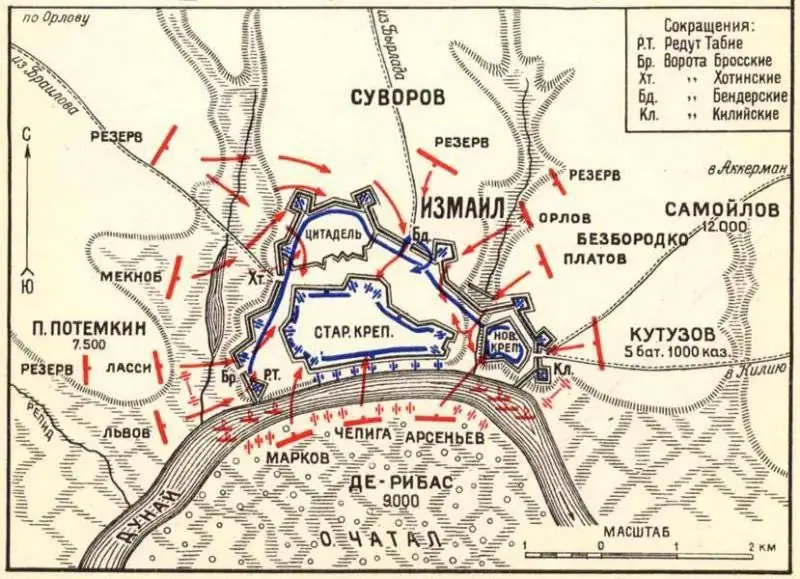
Siege and assault on Ishmael
In 1790, after the capture of the fortresses of Kiliya, Tulcha and Isakcha, the commander-in-chief of the Russian army, Prince G. A. Potemkin-Tavrichesky gave the order to the detachments of generals I. V. Gudovich, P. S. Potemkin and General de Ribas' flotilla to capture Ishmael. However, their actions were hesitant. On November 26, the military council decided to lift the siege of the fortress due to the approach of winter. The commander-in-chief did not approve this decision and ordered General-in-Chief A. V. Suvorov, whose troops were at Galati, take command of the units that besieged Izmail. Having assumed command on December 2, Suvorov returned the troops that were retreating from the fortress to Ishmael and blocked it from land and from the side of the Danube River. After completing the preparation of the assault in 6 days, on December 7, 1790, Suvorov sent an ultimatum to the commandant of Izmail demanding the surrender of the fortress no later than 24 hours after the delivery of the ultimatum. The ultimatum was rejected. On December 9, the military council assembled by Suvorov decided to immediately begin the assault, which was scheduled for December 11. The attacking troops were divided into 3 detachments (wings), 3 columns each. A detachment of Major General de Ribas (9 thousand people) attacked from the river side; the right wing under the command of Lieutenant-General P. S. Potemkin (7,500 people) was to strike from the western part of the fortress; the left wing of Lieutenant-General A. N. Samoilov (12 thousand people) - from the east. The cavalry reserves of Brigadier Westphalen (2,500 men) were on the land side. In total, Suvorov's army numbered 31 thousand people, including 15 thousand - irregular, poorly armed. (Orlov N. Shturm Izmail by Suvorov in 1790 St. Petersburg, 1890. S. 52.) Suvorov planned to start the assault at 5 o'clock in the morning, about 2 hours before dawn. Darkness was needed for the surprise of the first blow and the capture of the shaft; then, it was unprofitable to fight in the dark, since it was difficult to control the troops. Anticipating stubborn resistance, Suvorov wanted to have at his disposal as much daylight hours as possible.
On December 10, with sunrise, preparations began for an assault with fire from flank batteries, from the island and from the ships of the flotilla (about 600 guns in total). It lasted almost a day and ended 2, 5 hours before the start of the assault. On this day, the Russians lost 3 officers and 155 lower ranks killed, 6 officers and 224 lower ranks wounded. The assault did not come as a surprise to the Turks. They were prepared every night for a Russian attack; in addition, several defectors revealed Suvorov's plan to them.
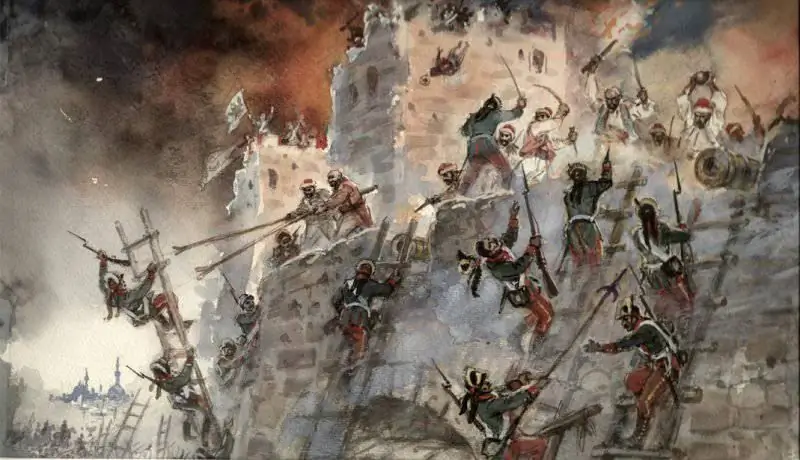
At 3 o'clock in the morning on December 11, 1790, the first signal rocket shot up, along which the troops left the camp and, rebuilding in columns, advanced to the places designated by the distance. At half past six in the morning, the columns began to attack. The 2nd column of Major General B. P. Lassi. At 6 o'clock in the morning, under a hail of enemy bullets, the huntsman Lassi overpowered the rampart, and a fierce battle began at the top. Absheron Riflemen and Phanagoria Grenadiers of the 1st Column of Major General S. L. Lvov was overturned by the enemy and, having captured the first batteries and the Khotyn gate, united with the 2nd column. The Khotin gates were open to cavalry. At the same time, at the opposite end of the fortress, the 6th column of Major General M. I. Golenishcheva-Kutuzova took possession of the bastion at the Kiliyskie gates and occupied the rampart up to the neighboring bastions. The greatest difficulties were given to the share of the 3rd column of Meknob. She stormed the large northern bastion, adjacent to it to the east, and the curtain between them. In this place, the depth of the ditch and the height of the rampart were so great that the stairs of 5, 5 fathoms (about 11, 7 m) were short, and we had to tie them together under fire. The main bastion was taken. The fourth and fifth columns (respectively, Colonel V. P. Orlov and Brigadier M. I.
The landing troops of Major General de Ribas in three columns under the cover of the rowing fleet moved on a signal to the fortress and formed a battle formation in two lines. The disembarkation began at about 7 am. It was carried out quickly and accurately, despite the resistance of more than 10 thousand Turks and Tatars. The success of the landing was greatly facilitated by the Lvov column, which attacked the coastal Danube batteries in the flank, and the actions of ground forces from the eastern side of the fortress. The first column of Major General N. D. Arsenyeva, who sailed on 20 ships, landed on the shore and divided into several parts. A battalion of Kherson grenadiers under the command of Colonel V. A. Zubov took possession of a very tough cavalier, having lost 2/3 of the people. A battalion of the Livonian Jaegers of Colonel Count Roger Damas occupied the battery, which enfiled the coast. Other units also took possession of the fortifications lying in front of them. The third column of brigadier E. I. Markova landed at the western end of the fortress under canister fire from the Tabia redoubt.
When daylight came, it became clear that the rampart had been taken, the enemy had been driven out of the fortresses and retreating into the inner part of the city. Russian columns from different sides moved to the center of the city - Potemkin on the right, Cossacks from the north, Kutuzov on the left, and de Ribas on the river side. A new battle began. Particularly fierce resistance lasted until 11 am. Several thousand horses, leaping out of the burning stables, raced through the streets in fury and increased the confusion. Almost every house had to be taken with a fight. At about noon, Lassi, who was the first to climb the rampart, was the first to reach the middle of the city. Here he met a thousand Tatars under the command of Maksud-Girey, the prince of Genghis Khan's blood. Maksud-Girey defended himself stubbornly, and only when most of his detachment was killed did he surrender with 300 soldiers who survived.
To support the infantry and ensure success, Suvorov ordered 20 light guns to be brought into the city to clear the streets of the Turks with grapeshot. At one o'clock in the afternoon, in essence, the victory was won. However, the fight was not over yet. The enemy did not try to attack individual Russian detachments or settled in strong buildings like in citadels. An attempt to snatch Ishmael back was made by Kaplan-Girey, the brother of the Crimean Khan. He gathered several thousand horse and foot Tatars and Turks and led them to meet the advancing Russians. In a desperate battle in which more than 4 thousand Muslims were killed, he fell along with his five sons. At two o'clock in the afternoon, all the columns entered the city center. At 4 o'clock the victory was finally won. Ishmael fell.

The results of the assault
The losses of the Turks were enormous, more than 26 thousand people were killed alone. Captured 9 thousand, of which the next day 2 thousand died of wounds. (N. Orlov, op. Cit., P. 80.) Of the entire garrison, only one person escaped. Lightly wounded, he fell into the water and swam across the Danube on a log. In Ishmael, 265 guns were taken, up to 3 thousand poods of gunpowder, 20 thousand cannonballs and many other ammunition, up to 400 banners stained with the blood of defenders, 8 lansons, 12 ferries, 22 light ships and a lot of rich booty, which went to the army, totaling up to 10 million piastres (over 1 million rubles). The Russians killed 64 officers (1 brigadier, 17 staff officers, 46 chief officers) and 1816 privates; 253 officers (including three major generals) and 2450 lower ranks were wounded. The total number of casualties was 4582 people. Some authors determine the number of killed up to 4 thousand, and wounded up to 6 thousand, only 10 thousand, including 400 officers (out of 650). (N. Orlov, op. Cit., Pp. 80-81, 149.)
According to a promise made in advance by Suvorov, the city, according to the custom of that time, was given to the power of the soldiers. At the same time, Suvorov took measures to ensure order. Kutuzov, appointed commandant of Izmail, posted guards in the most important places. A huge hospital was opened inside the city. The bodies of the killed Russians were taken out of the city and buried according to the church rite. There were so many Turkish corpses that an order was given to throw the bodies into the Danube, and prisoners were assigned to this work, divided into turns. But even with this method, Ishmael was cleared of corpses only after 6 days. The prisoners were sent in batches to Nikolaev under the escort of the Cossacks.
Suvorov hoped to receive the rank of Field Marshal for the storming of Ishmael, but Potemkin, petitioning for his reward to the Empress, offered to award him with a medal and the rank of Guards Lieutenant Colonel or Adjutant General. The medal was knocked out, and Suvorov was appointed lieutenant colonel of the Preobrazhensky regiment. There were already ten such lieutenant colonels; Suvorov became eleventh. The very same commander-in-chief of the Russian army, Prince G. A. Potemkin-Tavrichesky, having arrived in St. Petersburg, received as a reward a field marshad's uniform, embroidered with diamonds, at a cost of 200 thousand rubles. Tauride Palace; in Tsarskoye Selo, it was envisaged to build an obelisk for the prince depicting his victories and conquests. Oval silver medals were awarded to the lower ranks; a gold badge is installed for officers; the chiefs received orders or golden swords, some - ranks.
The conquest of Ishmael was of great political importance. It influenced the further course of the war and the conclusion in 1792 of the Yassy Peace between Russia and Turkey, which confirmed the annexation of Crimea to Russia and established the Russian-Turkish border along the river. Dniester. Thus, the entire northern Black Sea region from the Dniester to the Kuban was assigned to Russia.






